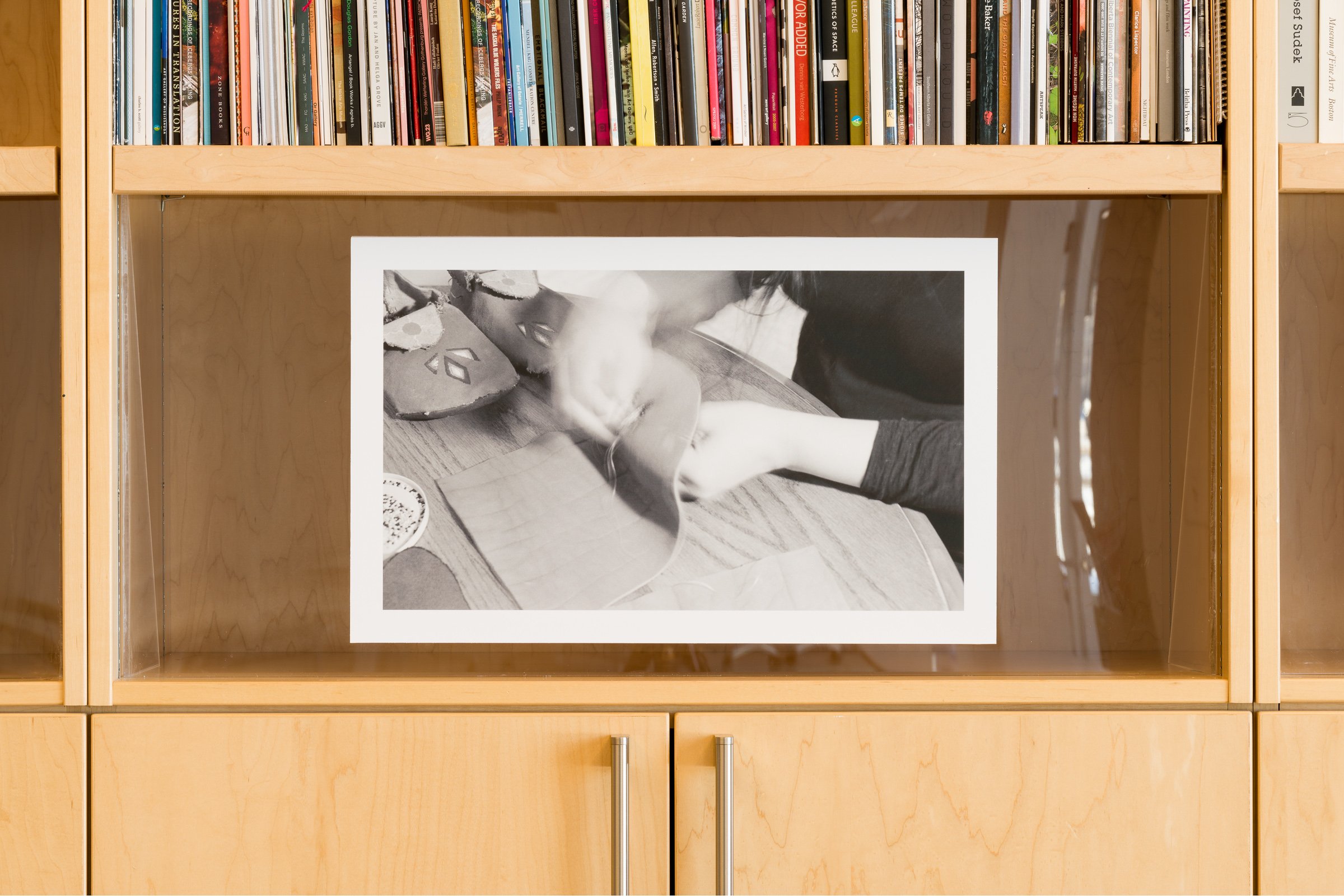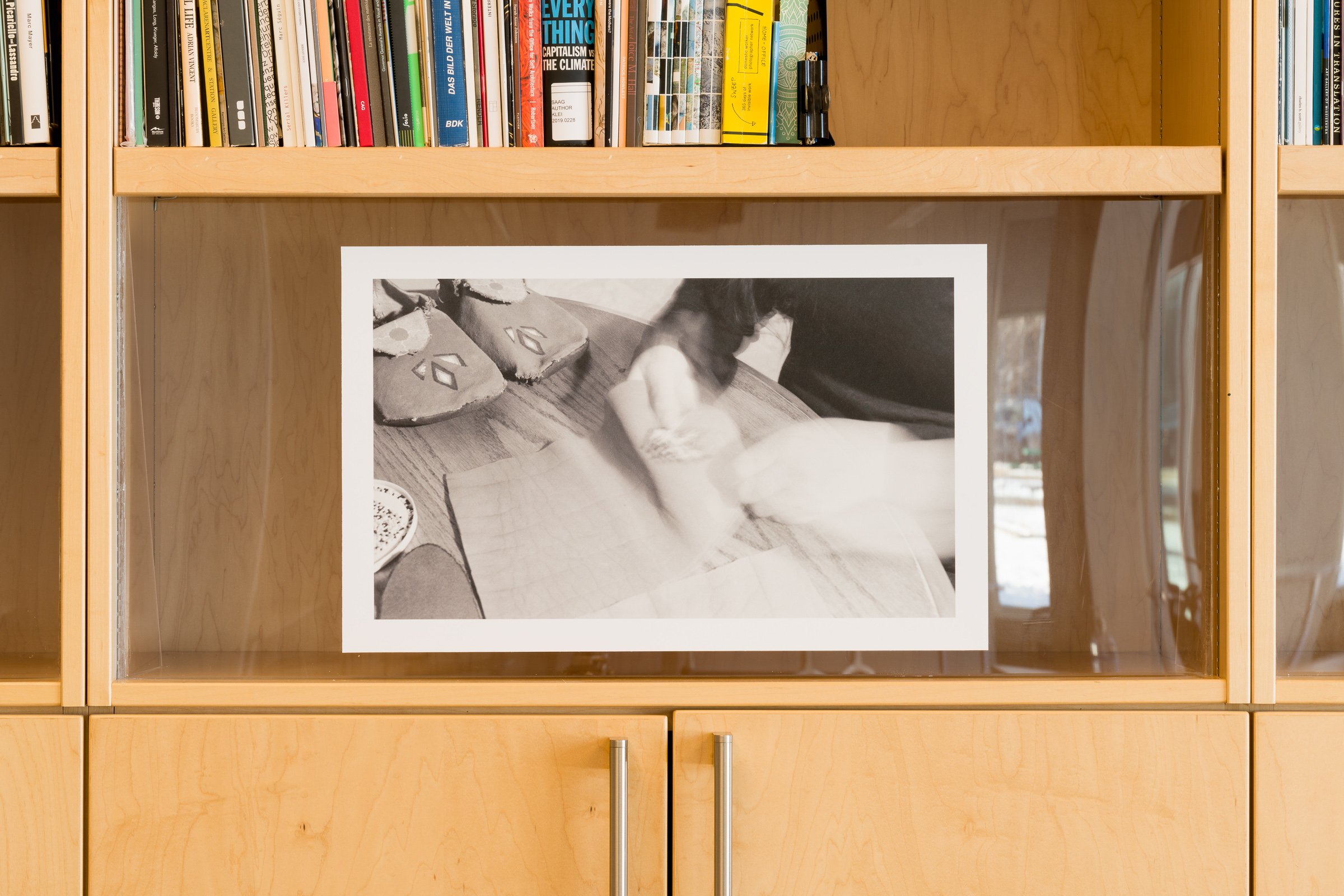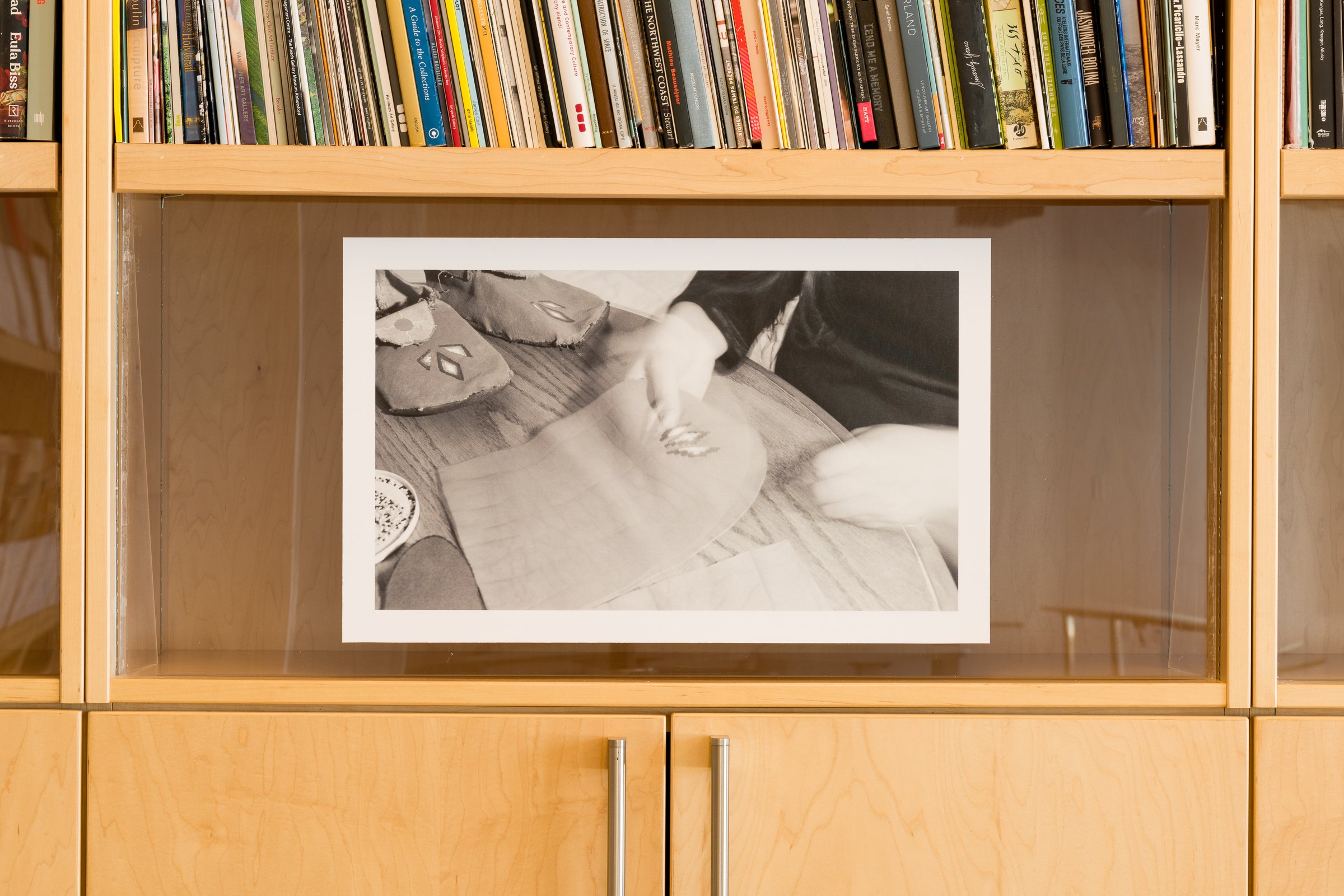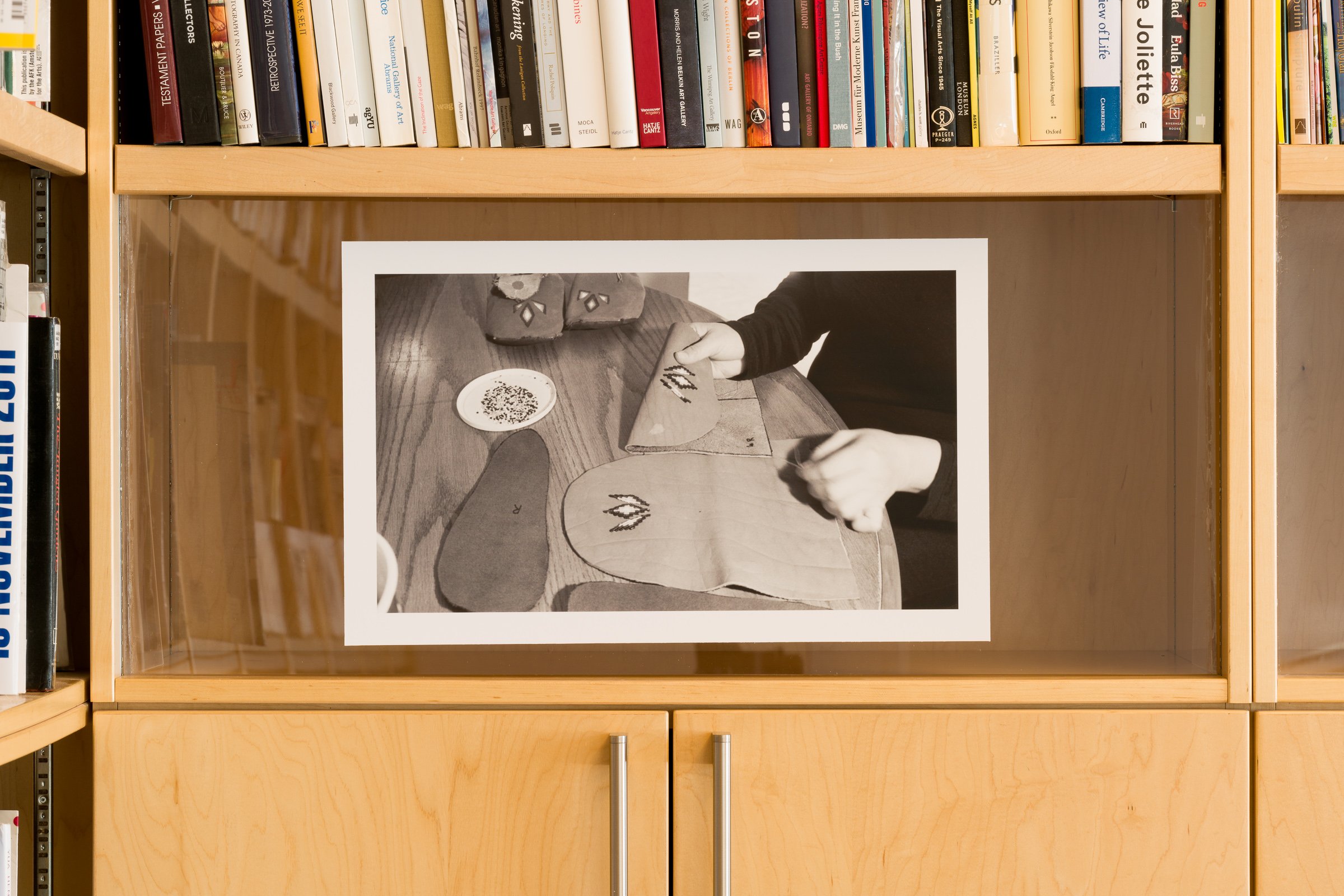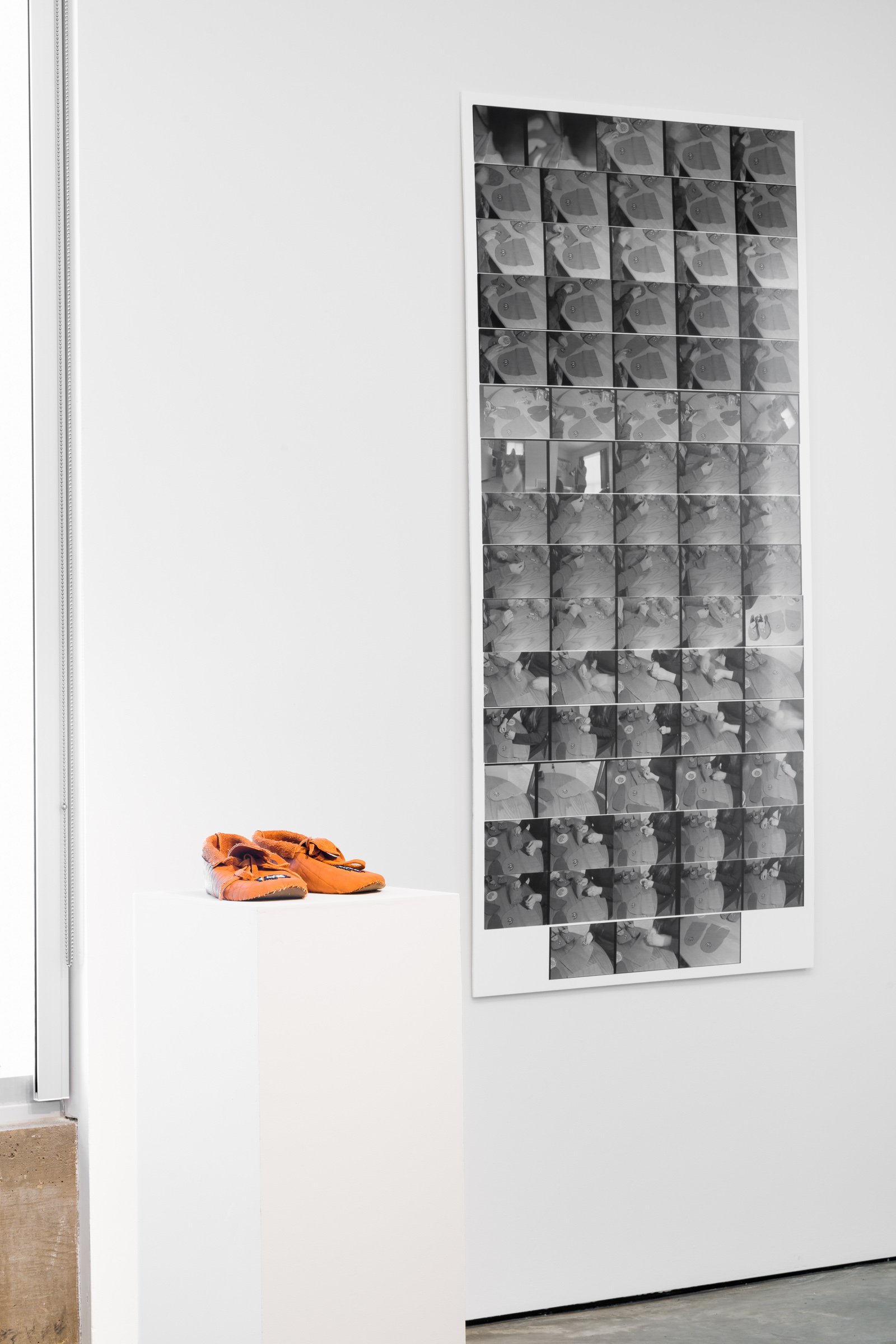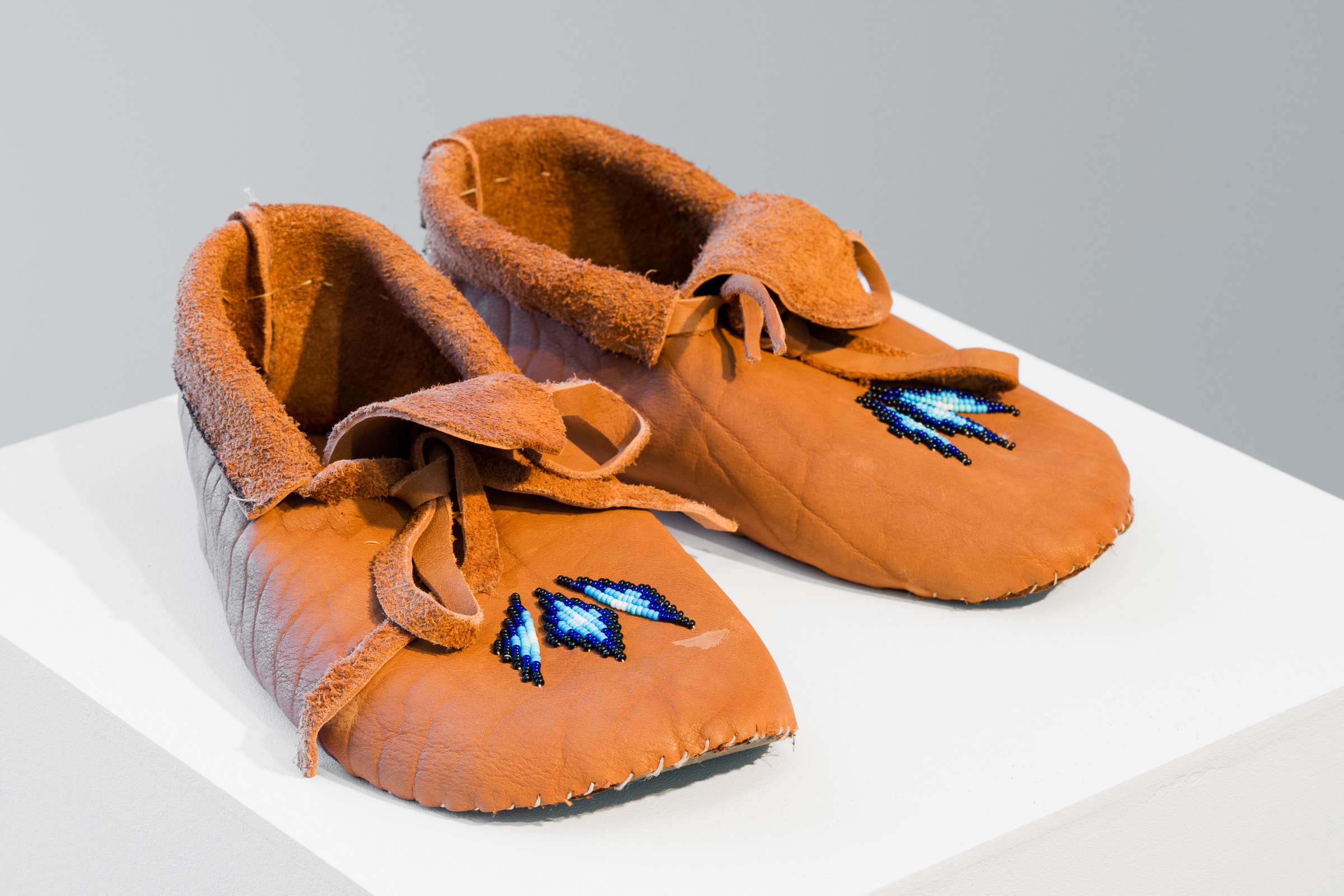CHATAYA HOLY SINGER
No’tsiitsi – My Hands
25 FEBRUARY 2023 - 23 APRIL 2023
Stitching can be radical; stitching can be healing. In Chataya Holy Singer’s No’tsiitsi – My Hands stitching and beading are both and more. Over the course of many months in 2022, Holy Singer sat at her dining room table, leather vamps and moccasin pieces spread out in front of her, beads and thread at hand, her tripod and analogue camera set up to capture the slow process of her beadwork and stitching: a thread connecting her to her Blackfoot ancestors. As she worked, the audiobook of Robin Wall Kimmerer’s Braiding Sweetgrass played softly as her hands worked stitch after stitch, bead after bead. No’tsiitsi – My Hands is comprised of 80 black and white photographs of the artist slowly crafting a pair of leather moccasins with traditional Blackfoot beaded diamond patterns on the vamps as well as the completed moccasins themselves, representing the outcome of the artist’s process and progress.
From the 19th century until 1951 the Indian Act made it illegal for Indigenous people to practice their cultural traditions and ceremonies in Canada, including the Sun Dance and beadwork. Traditional dress was forbidden in residential schools and, prior to 1951, Indigenous peoples required the permission of the Indian Agent to wear ceremonial dress off reserve. Despite these attempts at assimilation, cultural genocide, and the threat of criminal prosecution, Indigenous elders and knowledge keepers worked to preserve traditional practices. Holy Singer’s reclamation of her Blackfoot roots is a response to this history and has involved re/learning traditional craft techniques, combining them with her knowledge and understanding of contemporary art.
There are affinities between the reclamation of Indigenous cultural practices and the attempt to elevate “women’s craft” by feminist artists beginning in the 1970s. Holy Singer’s stitching and beading are as much about survivance as they are feminist gestures. In one image, the artist’s blurred hands underscore the active process of making and stitching. The moccasins are a manifestation of Blackfoot identity in a state of becoming: tying past to present and future.
No’tsiitsi – My Hands is also about reciprocity. Holy Singer has reflected that “The action of creating the moccasins is a way of reciprocating the relationship that I have with the materials I am working with. The animal’s hide that was processed and… which I purchased at the craft store and am now shaping it to the size of my foot and adorning it with beads with the intention of wearing them out on special occasions… gives the material of the animal’s skin meaning.” The idea of creating something “from scratch” also informs the artist’s use of analogue black and white photography, intended to underscore the image’s materiality—a materiality present in the photographs’ subject. This an assertion of sovereignty: of the endangered history of beadwork and moccasin-making, of the domestic space of the home and Indigenous women’s craft traditions, and the use of the camera as a powerful (and historically colonial) tool of representation.
Curated by Devon Smither
Chataya Holy Singer is a Kainai Blackfoot interdisciplinary artist working with both traditional and contemporary mediums including photography, digital media, painting, drawing, performance, beading and sewing. Her work addresses identity, spirituality, language, and traditional knowledge by integrating her Indigenous worldview with a contemporary perspective.
Holy Singer is deeply passionate about her Blackfoot roots. Her practice weaves concepts of the past and present as a tool to preserve her culture for the future. Holy Singer achieves this through acts of resilience, decolonization, revitalization, and reclaiming what has been taken away from her ancestors. She aims to “break the cycle” of intergenerational trauma while navigating through a Eurocentric society with an Indigenous lens. Holy Singer is a strong advocate for education, encouraging the youth to continue bridging the gaps left by historical trauma. Her inspiration derives from her strength to carry on the traditional ways of life, supported by her art, and surviving through blood memory.
Devon Smither is Associate Professor of Art History and Museum Studies at the University of Lethbridge, located in traditional Blackfoot Confederacy, Treaty 7, and Métis Nation 3 territory. She is an art historian whose research and teaching interests focus on gender and modernity, modern art in Canada, and North American women artists. Devon is currently completing a book manuscript based on her PhD research on the female nude in Canadian painting and photography from 1913 to 1965 (MQUP) as well as a manuscript on Pegi Nicol MacLeod (Art Canada Institute). Other current research projects examine Gertrude Vanderbilt Whitney’s support of artists from 1905 to 1930 whose works form part of the founding collection of the Whitney Museum of American Art in New York (funded by a SSHRC IDG and Terra Grant) and a new project examining feminist art in Canada in the 1980s and 1990s. She is a founding member of Open Art Histories (openarthistories.com), a group of art historians in Canada devoted to advancing the conversation and scholarship on art, art history, and pedagogy. She has published articles and reviews in RACAR: Revue d’art Canadienne/Canadian Art Review, The Journal of Historical Sociology, and The Literary Review of Canada. Devon is the current English-language book editor for RACAR.


